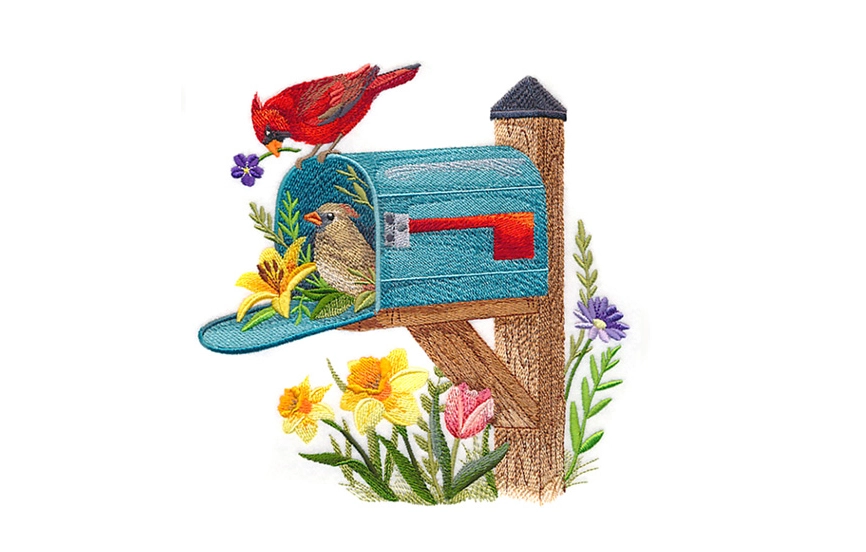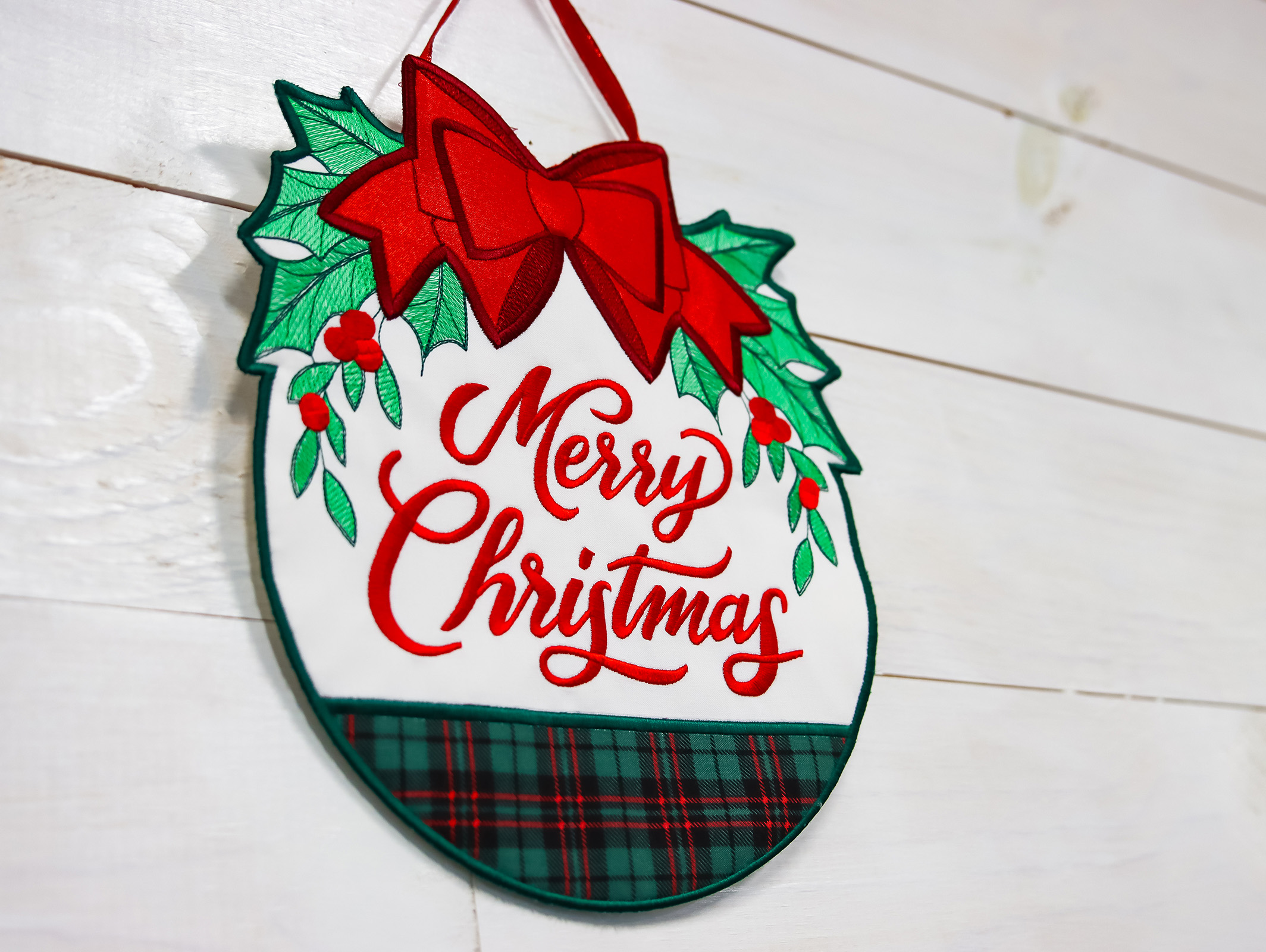
Create your very own in-the-hoop fabric welcome sign to add some fun and flare to any home.
Supplies
- Quilter's cotton
- Felt
- Cotton Batting
- Medium weight Cutaway Stabilizer
- Tear away Stabilizer
- Ribbon or Cord (for hanger)
- Temporary Spray Adhesive
Designs Used

When you download the in-the-hoop design, you will find multiple files. One is an embroidery file, and the others are dieline files marked with the letters "DL". Dielines are used to cut the fabric to the correct shape and size.
Open and print each dieline file using embroidery software. If you do not have embroidery software, take a look at our helpful video on using dielines without software. We also recommend Wilcom's Hatch software which comes in different levels depending on what you'd like to use the software for. Hatch Organizer works well to view your designs, print dielines and templates, change design colors, and create basic design layouts. (this is an affiliate link - we may earn a commission off purchases made with this link)

For the front fabric piece, spray the wrong side of the cotton fabric with temporary adhesive. Then smooth it onto a piece of cutaway stabilizer, so the stabilizer ends up glued onto the wrong side of the cotton. Spray the front piece dieline with temporary adhesive as well, and smooth it on the right side of the cotton fabric.

Then cut the front piece out of the adhered cotton and stabilizer. Repeat to cut out any applique pieces, making sure each is a piece of cotton with a layer of cutaway stabilizer on the back. Remove the paper dielines once cut out.

For the back piece, select a thicker fabric like felt to add some stability to the sign (this will be the fabric that shows on the finished sign). Use spray adhesive to glue together a layered stack of materials. On top should be the felt, in the middle glue a piece of cutaway stabilizer, and on the back should be a piece of cotton batting. Spray the back piece dieline with temporary adhesive as well, and smooth it on the right side of the felt.

Cut out the layered fabric and materials to create the back piece. Remove the paper dieline.
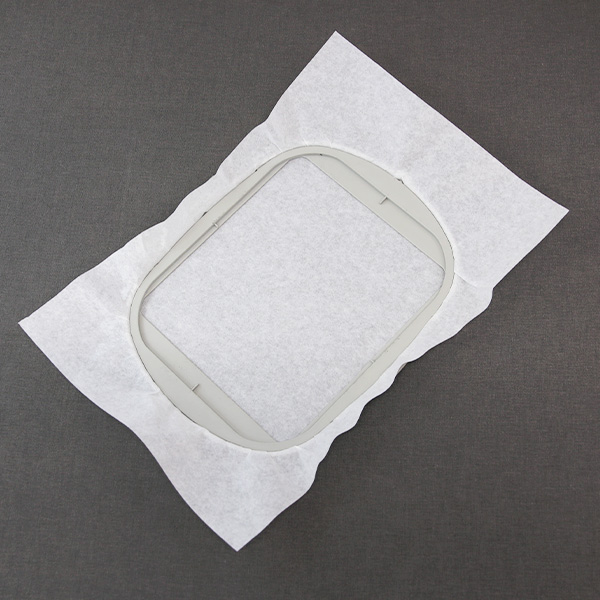
After all the fabric pieces are ready, its time to embroider the design. Hoop a piece of tear-away stabilizer. Madeira E-Zee 1.5oz or Floriani Tearaway Medium are good choices. They are both more fibrous, less like paper, and will tear more cleanly.

Attach the hoop onto the machine, and load the embroidery design (not the dieline files). Use a 75/11 sharp sewing needle instead of an embroidery needle. The sharp sewing needle has a finer point, and it will make smaller perforations in the stabilizer. Embroider the design. The first thing to embroider will be the first dieline (or outline stitch). This marks the are on the stabilizer where the first front fabric piece will be placed.

After the dieline has sewn, remove the hoop from the machine, but do not unhoop the stabilizer. Spray the wrong side of the front fabric piece (the side with the cutaway stabilizer) with temporary adhesive. Place the fabric on the hooped stabilizer inside of the sewn dieline with the fabric side facing upwards.

Then place the hoop back onto the machine, and embroider the tackdown for the front fabric piece. A tackdown holds the fabric piece in place for the remainder of the design.

Some ITH Signs have applique pieces. As you embroider the inner details, watch for steps labeled as "dielines" as they will sew outlines showing where to place the applique fabric pieces.

After any dieline has sewn, remove the hoop from the machine without unhooping it just as done earlier with the front fabric piece. Spray the stabilizer side of the applique piece with temporary spray adhesive, and carefully place it inside of the sewn dieline. Then continue to embroider the design, sewing the tackdown for the applique pieces and any following details.
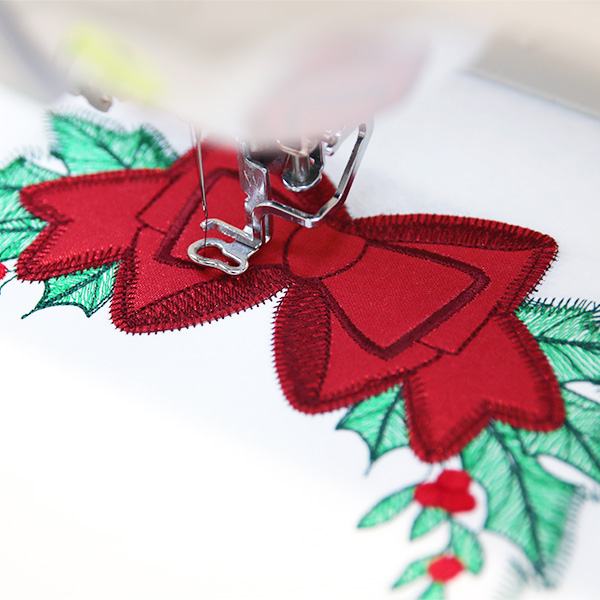
Sew out the remaining details of the sign, including any additional applique pieces. Some designs will have multiple, so read your color change sheet carefully.
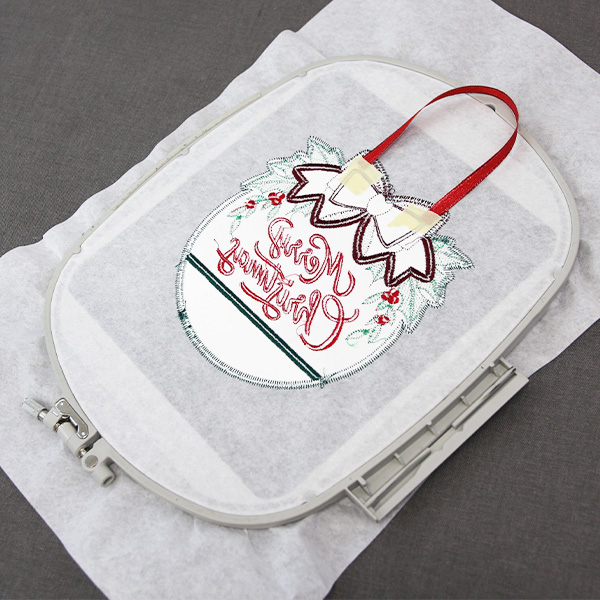
Before sewing the "back piece tackdown" step, remove the hoop from the machine without unhooping the stabilizer, and flip it over so the back side of the embroidery is facing up. To add a hanger, cut a piece of ribbon or cord 5-10in long (depending on design size and desired hanger look), and tape it along the top center edge of the sign, so each end of the cord is slightly overlapping onto the back of the design. For the sign to hang correctly, the hanger needs to be centered, and create a nice arch above the top edge. For example on this Christmas sign, we matched each end of the hanger up with the top corners of the bow.
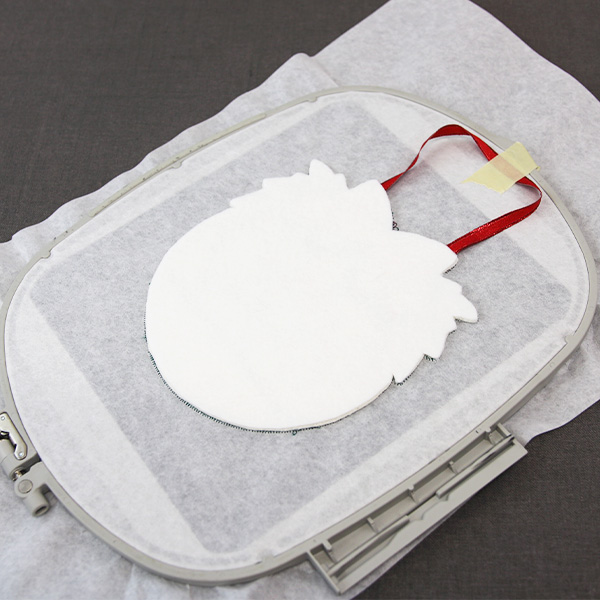
Then spray the back side of the back piece with temporary adhesive, and smooth it inside the shape on the back side of the embroidery. The nice side of the felt should be facing up.

As any further bobbin stitching will now be seen on the finished product, wind bobbins to match all remaining thread colors used in the final steps of the design.

Place the bobbins into the machine, so the bobbin always matches the top thread color. Follow the color change sheet, and embroider the rest of the design.

Once the embroidery is completed, carefully tear the excess stabilizer away from the outer edges of the sign. Also remove any remaining visible tape.



